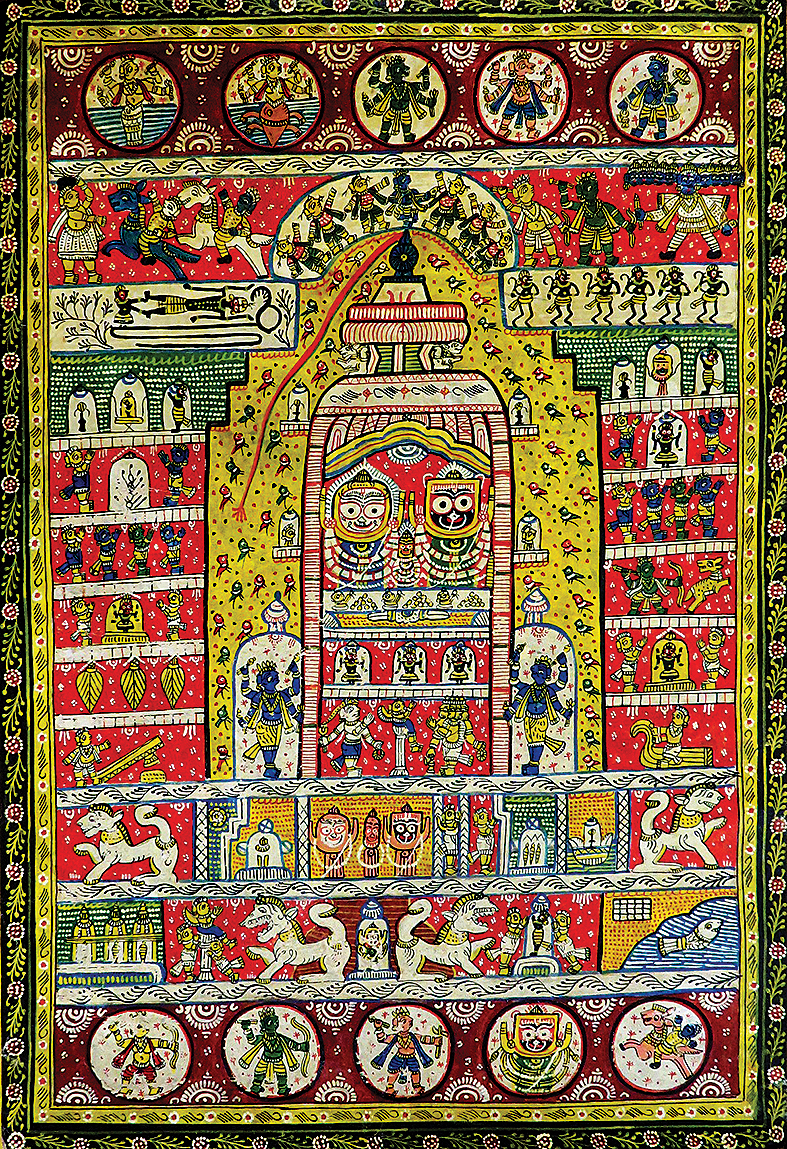
Dating back to the 13th century, Bengal Pattachitra — is known for its intricate details with mythological narratives and folktales inscribed in it. Similarly, featuring intricate paintings portraying Lord Krishna done on fabric using dark rich hues — Pichwai is a traditional art having its origin in Rajasthan.
Showcasing several such contemporary along with lost and undiscovered folk and tribal art from different parts of the country, ‘Seeds to Flowers’ exhibits striking collection of around 100 such artworks.
Brought together by Art Konsult, the gallery has been exhibiting folk art from as early as 1996. “We are chronicling the germination of raw Indian folk art into contemporary art , hence the title ‘Seeds to Flowers’” says Siddharta Tagore, curator of the exhibition.
According to Tagore, the development has happened in the past 10 years, and the rawness is missing in today’s works. With concrete taking over all around, the mud houses in which the artists lived and created murals on do not exist anymore. The environment is not conducive to create and sustain many folk and tribal arts, he believes.
The tales of ancient epics and deities formed the subject of several artworks across the country. The Pinguli Chitrakati – a unique style of paintings practised in the ancient village of Pingulli, in the tribal regions of the state of Maharashtra, describes traditional stories that are claimed to be with the Thakar community for over 500 years. The stories belong to Ramayana , Mahabharata and Nandi Puran. Moving to the North, the Chamba rumal from the Himachal depicts the raas lila of Krishna and Radha.
Drawing inspiration from nature and harvest, the harmonious art from Warli tribe which is one of the largest in India, is centered around the concept of Mother Nature. Since farming is their main livelihood, the paintings revolve around harvest and the festivities surrounding it.
The exhibition also features the Sahrai and Khovar folk art which draws heavily from the forest life, along with Gond art of Madhya Pradesh. The delicate, head hunting sculptures of Nagaland , Bhutta sculptures from Karnataka and the leather puppets from Andhra Pradesh, also find their place in the exhibition.
“Collecting tribal artworks for the past 25 years, we are not only displaying the traditional folk or practising traditional art but are also discovering new such art forms which were existing yet never came to the frontline,” concludes Tagore.
The exhibition is on display at India Habitat Centre from May 1-6
Police said despite sustained efforts, the accused remained at large and kept changing locations and…
At a debut solo exhibition in Delhi, an architect-artist explores sand, memory and movement through…
Om Taneja (81) and his wife Indira (77), a doctor, were kept under “digital arrest”…
The court observed although appellant had caused death by rash and negligent act, sending him…
AAP leaders were detained during a protest against the BJP over an alleged doctored video…
NDMC is rolling out a G20-style upgrade of roads, lighting and cleanliness to prepare Delhi…